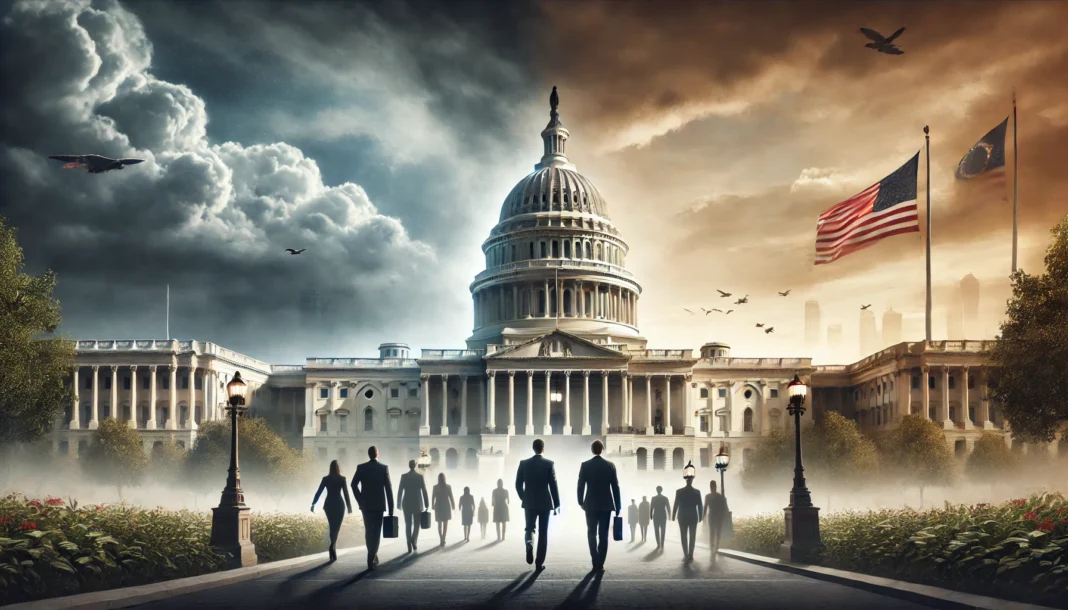Introduction
The Trump administration has announced a buyout program for federal employees aimed at reducing the size of the federal workforce. This move has sparked debates regarding its economic implications, the legal ramifications, and the broader impact on the U.S. job market. The buyout plan offers eligible employees a severance package equivalent to eight months of salary and full benefits until September 30, 2025. However, those who choose to remain will be required to return to office-based work under stricter conduct policies.
How Many Federal Employees Are Expected to Resign?
The federal government employs over 3 million people, excluding military personnel. According to early estimates from the Office of Personnel Management (OPM), approximately 15% to 20% of eligible employees—roughly 450,000 to 600,000 workers—may accept the buyout offer. This projection is based on previous workforce reduction programs and recent surveys indicating that many employees prefer remote work over returning to the office.
For comparison, during the federal downsizing efforts in the 1990s, around 12% of federal employees accepted similar buyout offers. Analysts believe the percentage could be higher this time due to shifts in work culture and dissatisfaction with the administration’s policy changes.
Impact on the U.S. Job Market
The mass resignation of federal employees could have significant ripple effects on the U.S. labor market. Key factors to consider include:
- Job Vacancies: A sudden departure of 600,000 workers from federal jobs may create skill shortages in critical sectors such as healthcare, transportation, and cybersecurity.
- Private Sector Absorption: Large corporations and private contractors may benefit by hiring experienced federal employees. However, not all workers will find equivalent positions in the private sector due to specialized federal roles.
- Unemployment Rate Impact: If the federal workforce downsizes rapidly without sufficient reabsorption into the job market, the U.S. unemployment rate—currently at 3.7%—could see a temporary increase.
- Economic Ripple Effects: With fewer employees in federal agencies, the public may experience delays in services like Social Security processing, IRS tax returns, and regulatory approvals.
According to a recent analysis by the Economic Policy Institute, a drastic reduction in federal employment could lead to an estimated 0.4% contraction in GDP growth over the next year due to reduced consumer spending and decreased government efficiency.
Democratic Opposition and Criticism
Democratic lawmakers have strongly criticized the buyout plan, arguing that it undermines government stability and disproportionately affects middle-class workers.
Senator Elizabeth Warren (D-MA) stated: “This buyout offer is nothing more than an attempt to gut the federal workforce and hand over critical government functions to private interests.”
Representative Jamie Raskin (D-MD) echoed similar sentiments, saying: “The Trump administration is coercing public servants into leaving their jobs while using intimidation tactics to consolidate power in agencies that are supposed to function independently.”
Additionally, the American Federation of Government Employees (AFGE) union has condemned the buyouts, calling them a “politically motivated attempt to dismantle federal institutions.” Union leaders warn that essential services could become dysfunctional if a large number of experienced employees accept the buyout.
Conclusion
The Trump administration’s buyout initiative is poised to reshape the federal workforce, but the long-term consequences remain uncertain. While proponents argue that it will reduce government spending and increase efficiency, critics warn of potential chaos within key agencies and negative economic repercussions. With nearly 600,000 federal employees expected to leave, the labor market will need to adjust rapidly to absorb the outgoing workforce. As the debate continues, it remains to be seen whether this policy will lead to a leaner, more effective government—or simply create new inefficiencies and job market instability.
Sources:
- Office of Personnel Management (OPM) Workforce Data
- Economic Policy Institute (EPI) Analysis Report, January 2025
- American Federation of Government Employees (AFGE) Union Statements
- Congressional Record, Testimony from Senator Elizabeth Warren and Representative Jamie Raskin
Liam Baker is a labor market researcher with expertise in workforce automation and employment trends. His insights have appeared in multiple HR and economics publications.



